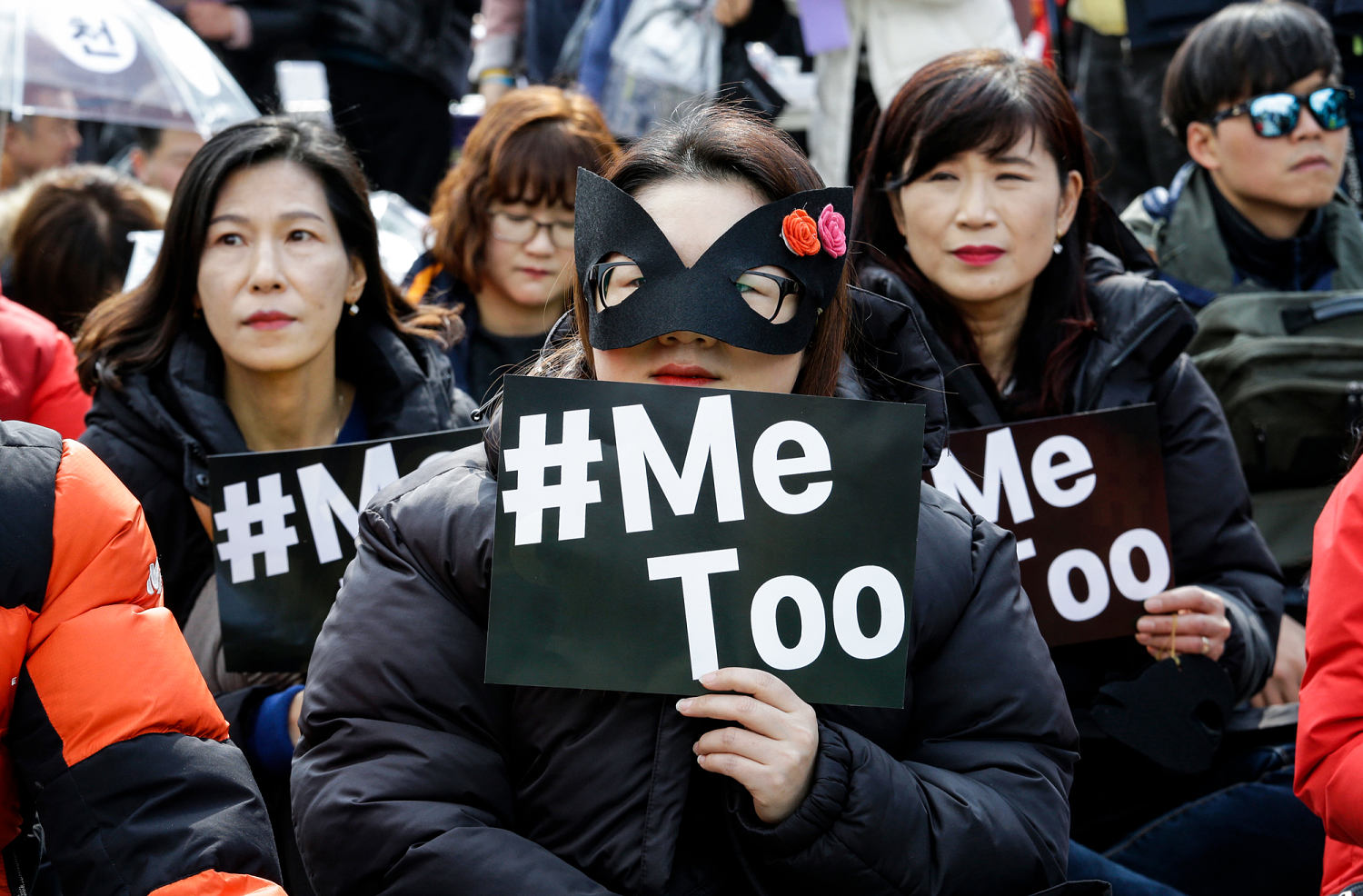How a French political movement from the 1950s helps explain Trump’s win

In the 1950s, France was swept by a right-wing populist movement founded by a rural bookstore owner named Pierre Poujade.
Poujade, a Royal Air Force pilot during World War II and a powerful orator, found his business squeezed by taxes and price controls. His complaints struck a note among other small business owners, tradespeople, service providers and farmers who felt oppressed by the government. His individual protest gained traction and ignited a political movement — “Poujadism” — which for a time shook the French political establishment.
At its height, Poujade’s movement, the Union de Défense des Commerçants et des Artisans (Union for the Defense of Tradesmen and Artisans) grew to 800,000 members, mostly in the small towns and rural areas of southern France. Still, Poujade was able to draw a crowd of 100,000 to Paris during the same period. His party won 52 seats in parliament in the 1956 elections.
The movement ultimately fizzled and, by 1981, Poujade had personally joined the progressive fold, endorsing Socialist presidential candidate François Mitterrand.
Some earlier observers compared Poujadism to the Tea Party movement, but it is instructive now as an ideological ancestor of Trumpism, as it contains strands of the same DNA.
Among the most enthusiastic Trump supporters today are the members of the entrepreneurial middle and lower-middle classes. Much like Poujade’s "petite bourgeoisie," they are taxi drivers, independent truckers and tradesmen, farmers, hair and nail salon owners, small retailers and restauranteurs. Unlike the wage-earning, underpaid, working-class “have nots,” these Poujadists are the “have-lesses.”
Despite widespread conflation by analysts and pundits, and similar rhetoric rife with resentment, they are not members of America’s working class because they control means of production, just on a very small scale.
This is not to say that these people have no legitimate grievances. Like the original Poujadists, they feel squeezed in the vise of taxes, regulations and mandated increases in the minimum wage for their employees, if they have any. They are working hard while falling behind; their aspirations to the middle class are slipping.
Their inclination to blame government policies for their plight is legitimate. But what is not legitimate is their inclination to blame the poor and immigrants.
Both the “have nots” and the “have lesses” suffer from high prices at the grocery store. The conundrum for Republicans is that the economic interests of these two parts of the Trump coalition — the wage-earning working class and the American Poujadists — do not always coincide. Responding to the interests of both could pose a challenge.
With tax cuts and the elimination of regulations, small businesses and tradespeople are likely to see their lot improve, at least marginally. In contrast, the poor and the low-wage working poor are often too dispirited to vote. They are consumed with surviving, struggling with multiple jobs and long-depressed wages to make ends meet. As if this were not a heavy enough burden, they are certain to suffer from budget cuts necessary to fund tax cuts for the wealthy, beginning with cutbacks to their medical care.
Unions and union members who supported Trump may be in for a grim shock when the Republicans inevitably must choose between the interests of striking workers and the corporate bosses who bankrolled the Trump campaign. When these contradictions become manifest, Democrats need to be prepared to reclaim their role as champions of the working class.
The election results strongly suggest that there is something going on in the political system that is structural and economic rather than cultural and ideological. Increasingly, Democrats are seen as the party of “haves” in terms of higher education and financial security, out of touch with the poor and working poor.
The great minds that lead the Democratic Party made a strategic decision that the Harris campaign would not make poverty and the working class a significant focus of their effort. How, then, did they expect working-class voters to view Democrats as their champions when ignoring them, focusing instead on suburban Republican women and base turnout?
As Sen. Bernie Sanders (I-Vt.) said after the election, “It should come as no great surprise that a Democratic Party, which has abandoned working-class people, would find that the working-class has abandoned them."
Writing recently in the socialist journal Jacobin, Princeton’s Matt Karp noted the “vast migration of working-class voters away from the Democratic Party … Until Democrats can find a way to win back some large chunk of working-class voters, Trump’s successors will be favored in the next presidential election.”
There was another path for Democrats in 2024 that holds lessons for the future. Two Democratic women in swing constituencies, Rep. Marie Gluesenkamp Perez in a rural Washington district and Elissa Slotkin in the Michigan U.S. Senate race, chose to pitch their campaigns to the working class — and won.
Two years from now, there is likely to be a reckoning at the midterm polls. By then, Democrats need to be ready with both a blueprint and a road map to return to power.
“The Democratic Party needs to be rebuilt,” Rep. Pramila Jayapal (D-Wash.), chair of the Congressional Progressive Caucus, told Politico Playbook. “We have become a party of elites, whether we abandoned working-class people, whether they abandoned us, whether it’s some combination of all of the above.”
Longtime Democratic activist and consultant Robert Creamer, author of the new book “Nuts and Bolts: The Formula for Progressive Electoral Success,” has some ideas about where to begin.
“Polling shows that if we lead with economic issues framed in populist terms we win working class voters,” Creamer said. “We have to talk both about the economic pain people are suffering, and the billionaires that thrive off of the economic inequality that causes that pain. And we must engage in the fights that demonstrate clearly who is on their side.”
Mark I. Pinsky is a Durham, N.C.-based journalist and author who has been covering politics in the South since 1972.
Topics
-
How Trump’s Win Is Explained by Right and Left Media Outlets
Business - The New York Times - 6 days ago -

Interest spikes in 4B movement after Trump win
Politics - The Hill - November 7 -

How Donald Trump came back from the political abyss
Top stories - BBC News - November 2 -

Trump is running a 1950s male dominance campaign
Politics - The Hill - November 5 -

How Trump’s Win Helps Him Fight Off His Legal Charges
Top stories - The New York Times - November 6 -

Interest spikes in the feminist fringe '4B' movement after Trump's win
Top stories - NBC News - November 7 -

4B Movement Surges in U.S. Interest After Trump Wins Election
Lifestyle - The New York Times - 6 days ago
More from The Hill
-

Almost 3 in 4 US adults overweight or obese: Research
Politics - The Hill - 3 minutes ago -

Malcolm X estate alleges DOJ, FBI, CIA, NYPD played role in events leading to assassination
Politics - The Hill - 13 minutes ago -

Gottheimer launches bid for New Jersey governor
Politics - The Hill - 14 minutes ago -

Pence calls on Senate to reject RFK Jr. nomination over abortion views
Politics - The Hill - 25 minutes ago -

Musk makes new antitrust claims against OpenAI
Politics - The Hill - 27 minutes ago
Latest in Politics
-

Almost 3 in 4 US adults overweight or obese: Research
Politics - The Hill - 3 minutes ago -

Malcolm X estate alleges DOJ, FBI, CIA, NYPD played role in events leading to assassination
Politics - The Hill - 13 minutes ago -

Gottheimer launches bid for New Jersey governor
Politics - The Hill - 14 minutes ago -

Pence calls on Senate to reject RFK Jr. nomination over abortion views
Politics - The Hill - 25 minutes ago -

Musk makes new antitrust claims against OpenAI
Politics - The Hill - 27 minutes ago